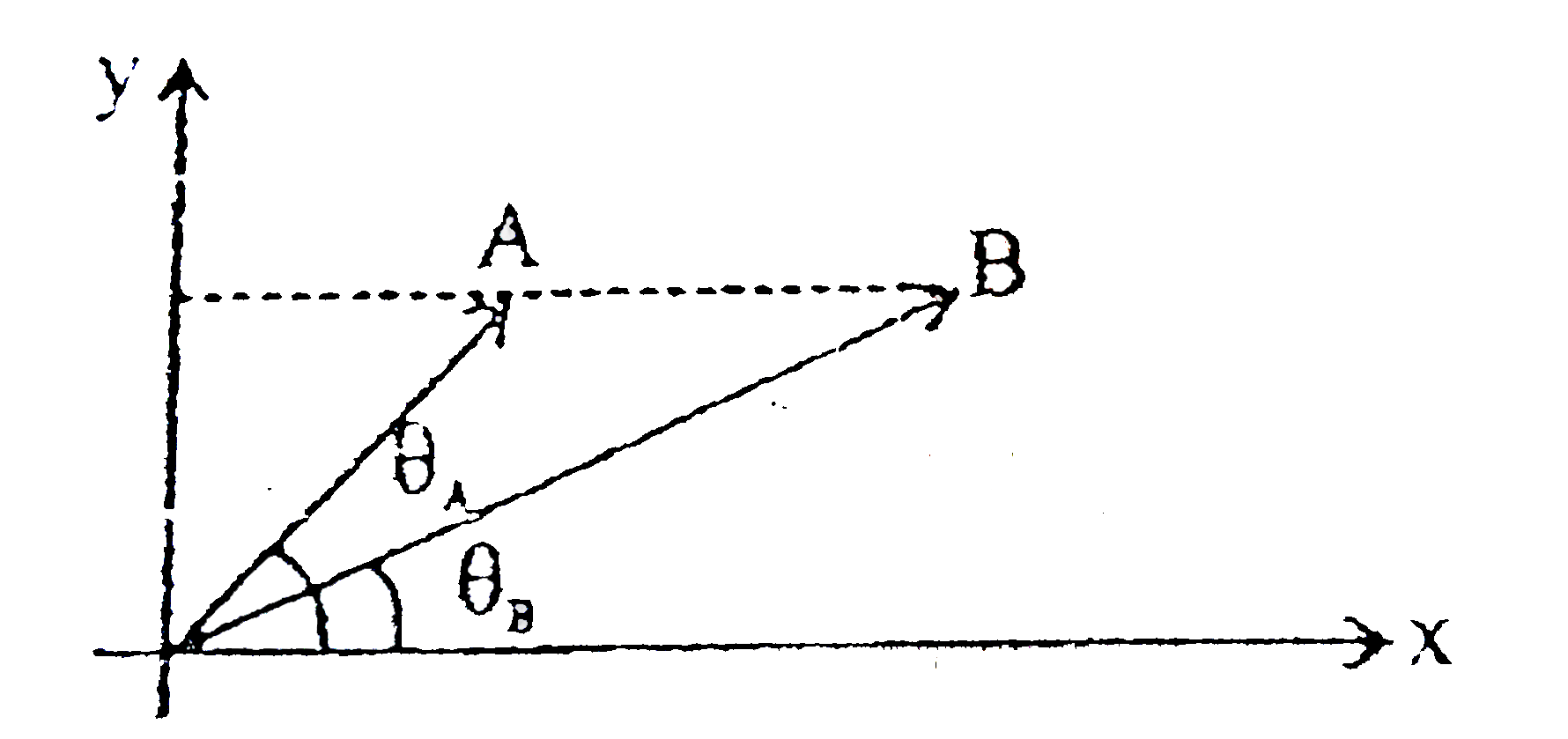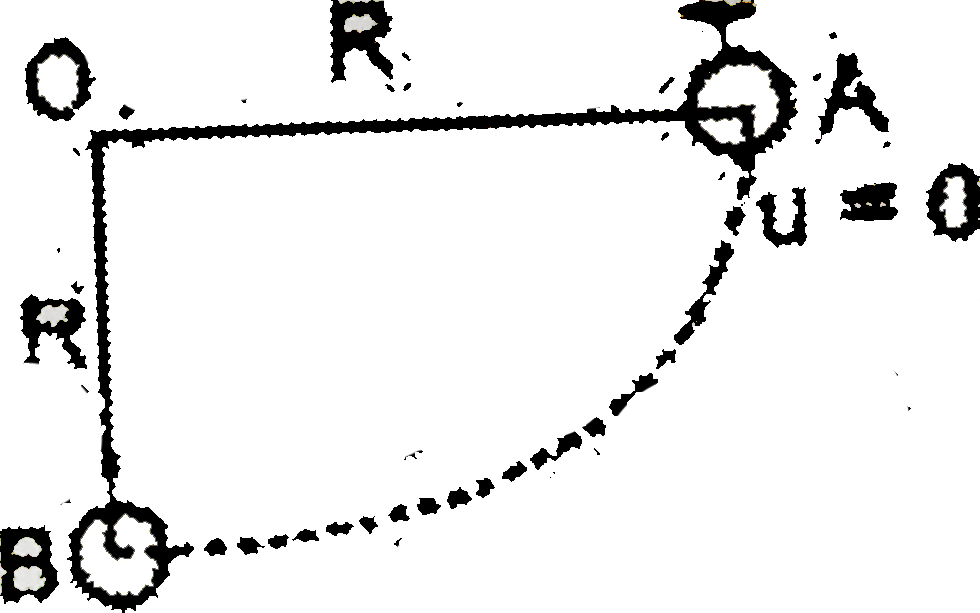A particle is in linear S.H.M. between two points A and B, 10 cm apart. Take the direction from A to B as the positive direction and give the signs of velocity, acceleration and force on the particle when it is.
(a) at the end A (b) at the end B,
(c) at the mid point of AB going towards A,
(d) at 2 cm away from B going towards A,
(e) at 3 cm away from A goiing towards B, and
(f) at 4 cm away from A going towards A.

(i)Zero, Positive, Positive
(ii)Zero, Negative, Negative
(iii)Negative, Zero, Zero
(iv)Negative, Negative, Negative
(v)Positive, Positive, Positive
(vi)Negative, Negative, Negative
Explanation:
(i & ii) The given situation is shown in the following figure. Points A and B are the two end points, with . O is the midpoint of the path.

A particle is in linear simple harmonic motion between the end pointsAt the extreme point A, the particle is at rest momentarily. Hence, its velocity is zero at this point.
Its acceleration is positive as it is directed along AO.
Force is also positive in this case as the particle is directed rightward.
At the extreme point B, the particle is at rest momentarily. Hence, its velocity is zero at this point.
Its acceleration is negative as it is directed along B.
Force is also negative in this case as the particle is directed leftward.

(iii)The particle is executing a simple harmonic motion. O is the mean position of the particle. Its velocity at the mean position O is the maximum. The v alue for velocity is negative as the particle is directed leftward. The acceleration and force of a particle executing SHM is zero at the mean position

(iv)The particle is moving toward point O from the end B. This direction of motion is opposite to the conventional positive direction, which is form A to B. Hence, the particle's velocity and acceleration, and the force on it are all negative

(v)The particle is moving toward point O from the end A. This direction of motion is from A to B, which is the conventional positive direction. Hence, the values for velocity, acceleration, and force are all positive.

(vi)This case is similar to the one given in (d).
Similar Questions
A particle is in linear S.H.M. between two points A and B, 10 cm apart. Take the direction from A to B as the positive direction and give the signs of velocity, acceleration and force on the particle when it is.
(a) at the end (A) at the end B,
(c) at the mid point of AB going towards A,
(d) at 2 cm away from B going towards A,
(e) at 3 cm away from A goiing towards B, and
(f) at 4 cm away from A going towards A.

View SolutionThe position vector →r of a particle points along the positive direction of a z axis. If the torque on the particle is (a) zero, (b) in the negative direction of x, and ( c) in the negative direction of y, in what direction is the force causing the torque?
View Solution
Knowledge Check
A particle is in linear simple harmonic motion between two points A and B, 10 cm apart (figure) . Take the direction from A to B as the +ve direction and choose the correct statements.
 AThe sign of velocity, acceleration and force on the particle when it is 3 cm away from A going towards B are positive.BThe sign of velocity of the particle at C going towards O is negative.CThe sign of velocity acceleration and force on the particle when it is 4 cm away from B going towards A are negative.DThe sign of acceleration and force on the particle when it is at point B is negative.
AThe sign of velocity, acceleration and force on the particle when it is 3 cm away from A going towards B are positive.BThe sign of velocity of the particle at C going towards O is negative.CThe sign of velocity acceleration and force on the particle when it is 4 cm away from B going towards A are negative.DThe sign of acceleration and force on the particle when it is at point B is negative.A particle is in linear simple harmonic motion between two points. A and B, 10 cm apart (figure.) take direction from A to B as the positive direction and choose the correct statements.

AO= OB= 5cm
BC=8cmAThe sing of velocity, acceleration and force on the particle when it is 3 cm away from A going towards B are positiveBThe sign of velocity of the particle at C going towards B is negativeCThe sign of volocity, acceleration and force on the particle when it is 4 cm away form B going towards A are negativeDThe sign of acceleration and force on the particle when it is at points B is negativeA particle is in linear simple harmonic motion between two points A and B10cm apart (figure). Take the direction form A to B as positive direction and choose the correct statements.
AO=OB=5cm
BC=8cm
 AThe sign of velocity, acceleration and force on the particle when it is 3cm away from A going towards B are positiveBThe sign of velocity of the particle at C going towards B is negativeCThe sign of velocity, acceleration and force on the particle when it is 4cm away from B going towards A are negativeDThe sign of acceleration and force on the particle when it is at point B is negative
AThe sign of velocity, acceleration and force on the particle when it is 3cm away from A going towards B are positiveBThe sign of velocity of the particle at C going towards B is negativeCThe sign of velocity, acceleration and force on the particle when it is 4cm away from B going towards A are negativeDThe sign of acceleration and force on the particle when it is at point B is negative
For a particle undergoing SHM, when will be its
(a)velocity and displacement in the same direction
(b) velocity and acceleration in the same direction
(c ) displacement and acceleration in the same direction
View SolutionIn a linear S.H.M., the acceleration of the particle is zero, when its velocity is
View SolutionA particle exectues a linear S.H.M. of amplitude 2 cm. When it is at 1cm from the mean position, the magnitudes of its velocity and acceleration are equal. What is its maximum velocity ? [√3=1.732]
View SolutionTwo particles A and B are projected from the same point in different direction in such a manner that their velocity vectors are shown in the diagram :−
 .
.
View SolutionA particle initially at rest is released from A as shown in figures. The approximate variation of direction of resultant acceleration as particle moves from A to B is :

View Solution